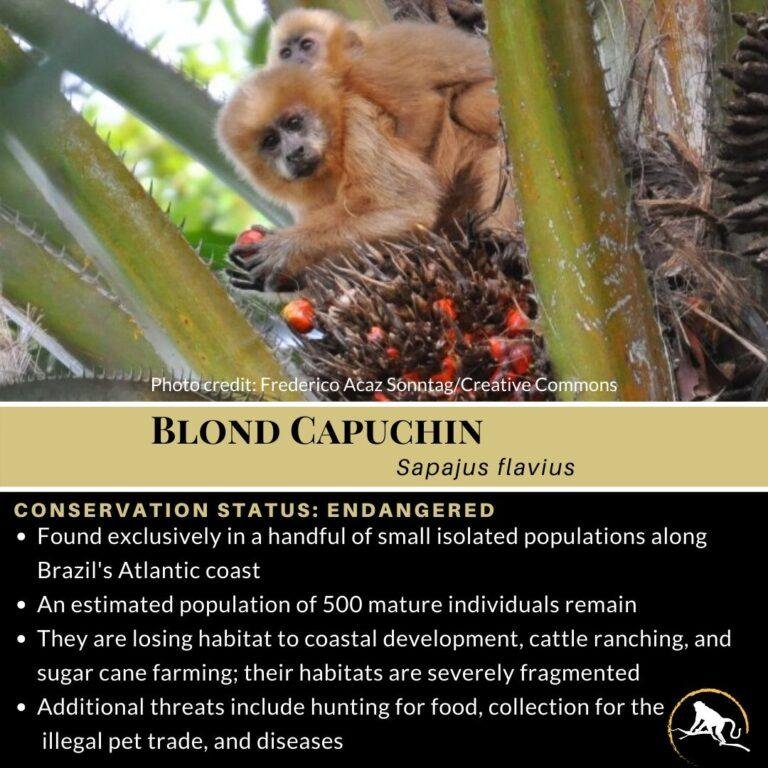
Tufted capuchins are primarily found in Central and South America, specifically in countries like Brazil, Colombia, and Ecuador. Imagine a rich tapestry of dense forests, sun-dappled canopies, and vibrant ecosystems. That’s where these monkeys spend their days, swinging from branch to branch and foraging for tasty treats. But their habitat is more than just a pretty picture; it’s vital for their survival. Let’s dive deeper into the specifics of where tufted capuchins live and what makes their home so special.
Geographic Range of Tufted Capuchins
The tufted capuchin, known scientifically as *Sapajus apella*, has a wide distribution across the northern part of South America. You’ll primarily find them in countries like:
- Brazil
- Colombia
- Ecuador
- Peru
- Venezuela
These monkeys prefer the lush, tropical rainforests, particularly in the Amazon Basin. They thrive in regions with warm weather, ample rainfall, and a diverse array of trees. Honestly, think about it like a VIP lounge for monkeys: the more foliage there is, the better the food and shelter. This environment allows them to climb easily, find food, and escape predators.
The tufted capuchin’s range isn’t just a flat expanse; it’s filled with various habitats. From wet lowland rainforests to drier, deciduous forests, you’ll find them adapting their lifestyles to different environments. The unique combination of these habitats plays a crucial role in their day-to-day activities and social structures.
What Types of Habitat Do Tufted Capuchins Prefer?
So, what does the ideal tufted capuchin habitat look like? To start, they thrive in primary forests—the untouched wilderness that boasts a rich variety of tree species and wildlife.
In these areas, they can often be spotted:
– In the canopy: This is like a highway in the sky for monkeys, where they find fruits, nuts, and small insects.
– Near rivers and wetlands: These spots are crucial for hydration, and they also offer a variety of food options.
– In the understory: Even lower down, they seek out the dense vegetation where they can hide from predators and forage for tasty snacks.
The mix of different layers of vegetation is vital. It creates a sort of buffet where tufted capuchins can pick and choose their meals while staying safe from larger predators like hawks and snakes.
The Role of Altitude in Tufted Capuchin Distribution
When you think about the distribution of tufted capuchins, you might not immediately consider altitude. However, altitude plays an important role in their habitat. These monkeys typically dwell between sea level to around 1,200 meters (about 3,900 feet) above sea level.
Why does altitude matter? Here’s the scoop:
1. Temperature Variability: As you climb higher, temperatures tend to drop. Tufted capuchins prefer warmer climates, so you’ll mostly find them in the lower elevations of their range.
2. Food Availability: The dense canopy at lower elevations often provides a wider assortment of fruits, nuts, and insects. Higher altitudes can mean sparser food sources, making it less appealing for these little foragers.
3. Predation: Being lower down not only keeps them warmer but also allows for more cover from predators. The dense forest at lower altitudes can provide them an escape route when danger is near.
In essence, the altitude creates a Goldilocks zone that helps regulate their lifestyle and food sources, ensuring they have everything they need.
Urbanization and Habitat Loss
Unfortunately, tufted capuchins aren’t just facing natural challenges; their habitat is under threat from human activities. Urbanization has crept into their living spaces, leading to several problems:
– Deforestation: Trees are cut down for timber or to make way for agriculture. This literally cuts off their homes.
– Fragmentation: As their habitat shrinks, these monkeys become isolated in patches of forest. This makes finding food and mates much harder.
– Human-Wildlife Conflict: As their natural spaces dwindle, they may wander into human territories looking for food, leading to potential conflicts.
Let’s not kid ourselves; the consequences of habitat loss are serious. It impacts their ability to find food, breed successfully, and maintain healthy social structures.
Conservation Efforts for Tufted Capuchins
Given all of these challenges, conservation efforts are crucial for the future of tufted capuchins. Various organizations work tirelessly to protect their habitats and ensure these lively monkeys continue to thrive. Here are some key strategies being used:
– Protected Areas: Establishing national parks and reserves creates safe havens where tufted capuchins can live without the threat of deforestation and urbanization.
– Reforestation Projects: Planting trees in degraded areas helps restore their habitat, giving the monkeys more room to roam.
– Educating Communities: It’s important to raise awareness about the importance of these monkeys and their ecosystems. Educating local communities is vital in reducing conflicts.
You might be wondering what you can do to help. Supporting conservation organizations, spreading awareness, or even visiting these regions responsibly can contribute to the efforts in preserving tufted capuchin habitats.
Understanding where tufted capuchins live and what makes their habitat special is more than just an academic exercise. It shines a light on the intricate web of life that exists in the rainforests of South America. By recognizing the challenges they face, we can appreciate the need for conservation and the vital role these monkeys play in their ecosystems.
The tufted capuchin is a testament to the wonders of nature. From their playful antics in the treetops to their complex social lives, these primates remind us of the importance of preserving their vibrant homes. So, the next time you hear about these cheeky little monkeys, you’ll know just how important their habitat is and what needs to be done to protect them.

